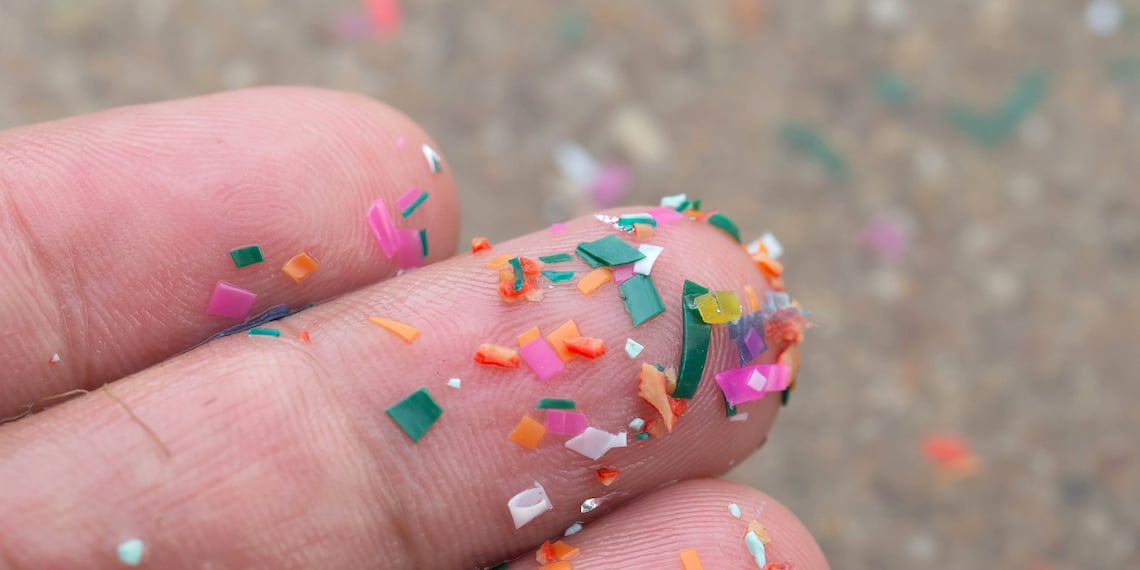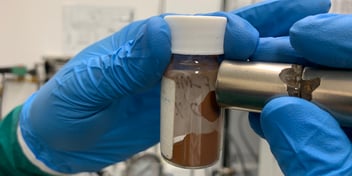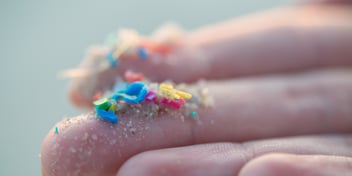More research needed to understand impacts of microplastic pollution

As millions of tonnes of microplastic waste mounts in aquatic environments every year, scientists are calling for an urgent focus on research to understand the potential ramifications of this contamination to wildlife, food webs and human health.
A Flinders University study published in Environmental Pollution has reviewed how plastic waste and associated chemicals affect the marine food web, highlighting that the implications of this widespread contamination of marine environments are still not well understood.
The scientists are calling for more research into plastic contamination and synthetic additives to understand and prevent further potential environmental and biological health problems.
Flinders University College of Science and Engineering PhD candidate Elise Tuuri said much more research is needed due to the complexity of microplastic pollution, and due to the substantial risk it poses to life forms right down the aquatic food web.
“This study highlights the complexity of microplastics as a pollutant and how this can lead to difficulties in determining accurate impacts to human health and local marine environments,” she said.
“We know that large plastic debris can directly result in the death of larger marine organisms – through entanglement, strangulation, choking and starvation through ingestion – while smaller organisms can filter the water and ingest smaller plastic debris.
“As well, from laboratory-based studies we know this affects sea animals’ feeding behaviour and reproductive outputs and can cause developmental anomalies, changes in gene expression, tissue inflammation and the inhibition of growth and development to both adults and their offspring.
“However, the impact of micro and nano-plastics to marine organisms in the environment are still relatively poorly understood and are considered a hidden threat.”
Flinders University Professor Sophie Leterme said the array of complex chemical additives that leach from microplastics into water also needs to be assessed for their impact.
“Studies have found that plastic pollution has a direct impact on bacterial growth, protein production, the acquisition effect of major primary producers phosphorus and nitrogen-fixing rates, photosynthesis and genome wide changes,” she said.
“So we need to understand what chemical additives do to macrophytes, phytoplankton, zooplankton and microbes in the sea.”
Complex challenge
Tuuri said one of the reasons microplastics require more attention than other emerging contaminants is the diversity of the pollutant: the huge array of sizes, shapes, polymer compositions and chemical additives create a sprawling contamination profile.
“Microplastics are quite complex. When you think about other contaminants, like PFAS for example, it’s one thing. You measure that one thing and you can determine what the potential effect or impact is going to be at a certain volume,” she said.
“With microplastics we need to consider more factors. Firstly, size varies greatly. In terms of plastic pollution, we have macroplastics, microplastics and nanoplastics.
“Microplastics come in a variety of different shapes, as well, which can have different impacts. For instance, if a turtle were to ingest a fiber from our clothing, it's not going to have a big impact. But if it’s a zooplankton that is microscopic, then an ingested fiber is going to have the potential to cause much bigger impacts, as it will block its gastrointestinal tract.”
The polymers from which the microplastic is composed also create a variable, Tuuri said, and the age of the microplastic can inform its impact on the environment.
“There are lots of different types of polymers. We are starting to find that different polymers are having different impacts on marine organisms. But there are also a variety of additives in microplastics that leach into the marine waters,” she said.
“The age of microplastics also comes into play. Newer polymers are going to have a higher load of chemicals than older polymers that have been in the environment for a while.
“Microplastics pose quite a tricky cocktail of issues. There is a lot still to understand about potential issues this contaminant may cause for environments, but also people.”
Future steps
Researchers tested the presence of an array of additives and polymer types in a range of different marine microbes and phytoplankton, and found reduced growth and photosynthesis in most of the samples.
High concentrations of microplastics were also found in suspension and filter feeders, such as oysters, that can readily ingest plastic particles.
Tuuri said that while the negative impacts of microplastics have been shown in laboratory tests, the impact of plastics on environmental communities is less researched, and concentrations present in the marine environment need to be understood to accurately evaluate the effect on vital food webs and possible implications for human health.
“We know microplastics are found in the organisms we are consuming, like oysters and fish. Researchers have found microplastics present in tins of tuna. So we want to know how much our bodies can handle before this becomes a really adverse problem,” she said.
“We have all seen photos of turtles ingesting macroplastics, and we know this can directly kill animals. But being able to see the effect microplastics have on the food web, and being able to link that clearly is a challenge.
“We need to know what our maximum limits are before everything starts to unravel.”
Tuuri said that while accurate abundances and identification is an area that needs more research, it’s also important to assess how much is entering the ocean over time.
“Once we have this, we will be better able to test what happens when organisms are exposed to these abundances at current levels. From there, we will also be able to start getting a bit more predictive so that we can have an idea of what will occur if microplastic pollution continues to increase,” she said.
Just as important is an increased focus on reducing the amount of microplastic finding its way into the environment in the first place, Leterme said.
“It’s impossible now to get rid of all the microplastic in the ocean. Some microplastics are the size of microplankton and bacteria. Our response to this issue will really be about stopping more plastic from making its way into the ocean,” she said.
“Every time we use our washing machine to clean clothing made from synthetic fibers, microplastic finds its way into our waterways. It’s important for regulators to look into this issue, including what we need to put in place to make sure we are stopping the source of this pollution.
“This is a big priority.”
Leterme said that while there is no shortage of interest in microplastic pollution, both from communities and organisations, further research is restricted by a lack of funding.
“It’s been really difficult to be able to fund projects. Financial support for microplastic research in Australia is still very limited. But it is hugely important work, which is why we invite individuals and organisations to donate to fund our projects,” she said.
“Given that the production of different types of plastic is still increasing, it’s absolutely imperative that we prioritise expanding our understanding of this omnipresent contamination issue.”



